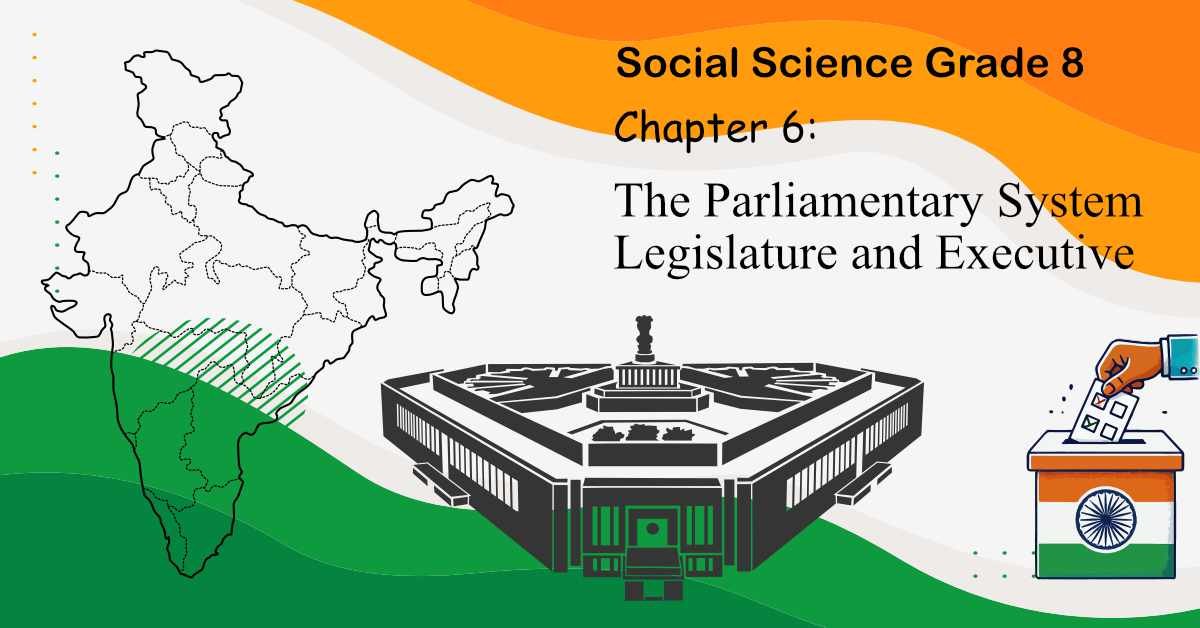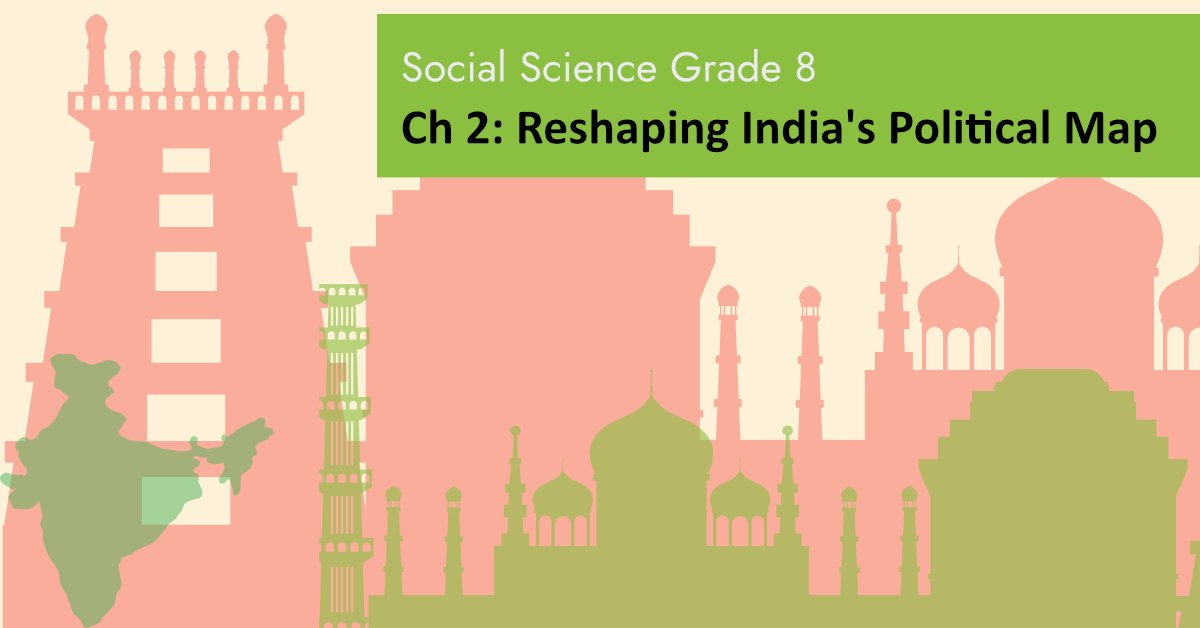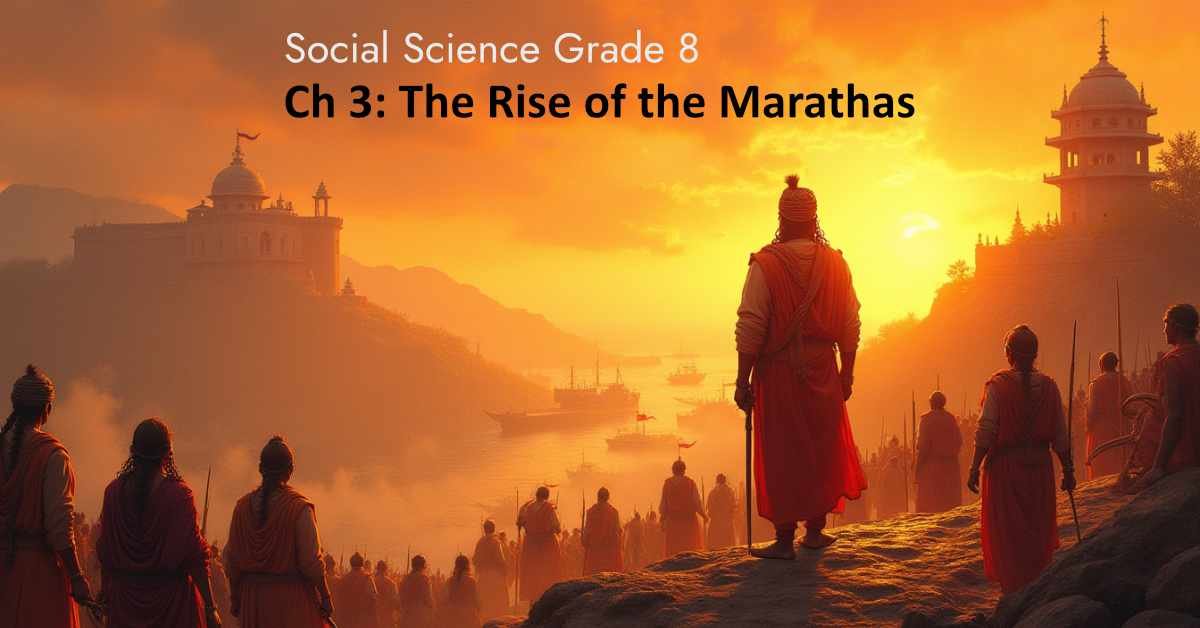The Parliamentary System : Legislature and Executive is the foundation of India’s democratic governance. After a long struggle for freedom, India adopted a system of government where the people are the ultimate source of authority.
The makers of the Constitution chose the parliamentary model, inspired by the British system, but carefully adapted it to India’s unique historical and social conditions.
The Parliamentary System Worksheet
The chapter explores the structure, role, and functions of the Legislature and Executive at both the Union and State levels, as well as the system of checks and balances that upholds Indian democracy. The Constitution of India became the guiding document, ensuring universal adult franchise and establishing a parliamentary democracy.
In this system:
- The Parliament is the supreme law-making body.
- It consists of the President, Lok Sabha (House of the People), and Rajya Sabha (Council of States).
- The Executive (President, Vice President, Prime Minister, and Council of Ministers) implements laws.
- The Judiciary ensures laws and executive actions follow the Constitution.
Looking for help with textbook questions? Download our free Class 8 Social Science NCERT Solutions – complete with detailed Q&A, MCQs, fill in the blanks, and more. Ideal for quick revision, homework practice, and exam preparation! Connect with us on WhatsApp to get extra worksheets and study materials.
Also Download:
Social Science Worksheets Class 8
Science Worksheets for Class 8 Curiosity
Hindi Worksheets for Class 8 Malhar
Maths Worksheets for Class 8
The Parliamentary System class 8 Notes
Structure of Parliament
- Bicameral Legislature: Lok Sabha + Rajya Sabha + President.
- Lok Sabha: Members directly elected by the people. Maximum strength – 550.
- Rajya Sabha: Members elected indirectly by state legislative assemblies. Maximum strength – 250.
- Presiding Officers:
- Lok Sabha → Speaker
- Rajya Sabha → Vice President of India (Chairperson)
Union Executive
- President – Head of State, nominal executive authority.
- Vice President – Presiding officer of Rajya Sabha.
- Prime Minister & Council of Ministers – Real executive authority, responsible to Lok Sabha.
Functions of Parliament
- Legislative Functions
- Constitutional amendments
- Lawmaking (bill → act → law)
Holding the Executive accountable
- Controlling finances (budget, money bills)
- Executive Functions
- President appoints PM, summons Parliament, gives assent to bills.
- Prime Minister leads the Council of Ministers, coordinates policies, and runs administration.
Lawmaking Process
- Draft → Bill → Discussion → Standing Committee → Voting → Both Houses → Presidential Assent → Gazette Notification → Law.
- Money Bills can only be introduced in Lok Sabha.
Checks and Balances
- Legislature checks Executive through Question Hour, debates, and committees.
- Executive implements laws but is accountable to Legislature.
- Judiciary interprets laws and ensures Constitutional validity.
State Legislature
- Can be Unicameral (Vidhan Sabha only) or Bicameral (Vidhan Sabha + Vidhan Parishad).
- Chief Minister is real executive authority at state level.
- State legislatures make laws on subjects in the State List and Concurrent List.
Challenges to Legislature
- Low productivity due to disruptions.
- Criminal background of some representatives.
- Reduced quality of debates
- Public distrust if sessions are unproductive.
Social Science class 8 Chapter 6 Question Answer
Q1. What is the difference between Lok Sabha and Rajya Sabha?
Ans: Lok Sabha members are directly elected by the people; Rajya Sabha members are indirectly elected by state assemblies. Lok Sabha is the Lower House; Rajya Sabha is the Upper House.
Q2. What is a Money Bill? Where can it be introduced?
Ans: A Money Bill deals with taxation, borrowing, or government expenditure. It can only be introduced in Lok Sabha.
Q3. Who is the real executive authority in India?
Ans: The Prime Minister and the Council of Ministers.
Q4. Why is the Judiciary important in a democracy?
Ans: It safeguards the Constitution, protects citizens’ rights, and ensures that laws and executive actions follow the Constitution.
Q5. Why did India choose a bicameral legislature at the Union level?
Ans: To balance representation of people (Lok Sabha) and states (Rajya Sabha), and ensure better debate and scrutiny of laws.
Class 8 Social Science Chapter 6 MCQs
Q1. Who presides over the Lok Sabha?
a) President
b) Prime Minister
c) Speaker
d) Vice President
Q2. The term of Lok Sabha is:
a) 4 years
b) 5 years
c) 6 years
d) Unlimited
Q3. Which of the following is not a function of Parliament?
a) Lawmaking
b) Conducting elections
c) Controlling finances
d) Ensuring executive accountability
Q4. The Prime Minister is appointed by:
a) Lok Sabha
b) Rajya Sabha
c) President
d) Vice President
Q5. Which of the following states has a bicameral legislature?
a) Tamil Nadu
b) Bihar
c) Rajasthan
d) Kerala
Answers:
c) Speaker
b) 5 years
b) Conducting elections
c) President
b) Bihar



